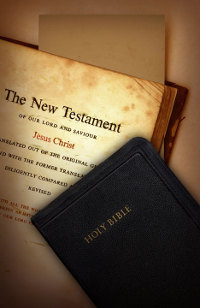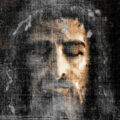
Sola Scriptura is Latin for “by scripture alone” – Christianity defined exclusively by the inspired, written word of God, without extension and without interpretation. God’s word without the corrupting influence of man. Intuitively (but superficially), it makes a lot of sense for everyone who seeks the unmodified truth. Many Protestant faiths embrace it. Catholics do not.
Make no mistake about it, the Holy Bible is central to Catholic beliefs. That is why we canonized (created) it. In the early Church there were many written testaments. They were not yet assembled into a single volume. Many were of questionable providence. Bishops assembled canons of writings as best they could, but there was not a single accepted set. In 382 Pope St. Damasus I issued the Decree of Damasus officially setting the 46 Old Testament books and 27 New Testament books. This was confirmed at the Council of Carthage in 397 along with formal acceptance of St. Jerome’s Latin Vulgate translation (which remains the unchanged Catholic translation to this day). The Holy Bible was also confirmed in 393 at the Council of Hippo and the 419 Council of Carthage.
As important to us as the Holy Bible is, we know it is incomplete. Sacred Tradition has always been part of Christianity. Christians in the first 400 years had no Bible. Jesus taught not in writing, but orally. The Bible itself does not claim to be the complete word of God. Jesus selected the first pope (St. Peter) upon whom to build the Church and to whom His authority was given. The Church and its authority did not end at the deaths of the first pope and bishops. The Church and its authority continues through the bishops who are direct successors of the Apostles. That is the root of Sacred Tradition.
Sacred Tradition is never at conflict with the Holy Bible. It is through Sacred Tradition and the infallibility of the Magisterium that we have the canon of the Holy Bible. It is also through that same source that we accurately interpret it.
Many non-Catholics object to the notion that the word of God needs “interpretation,” even by those who canonized it to begin with. Some say it is self-evident. If only that were so! While divinely inspired and infallibly confirmed as the word of God, the Holy Bible is expressed in static words. Those words have meaning and context which is not self-evident any more than all other words in the history of mankind. Different people, with the most sincere and holy intentions, read them and come to different understandings. Sola Scriptura rooted Protestant denominations differ widely in their interpretations of the Bible. If only one interpretation were possible, they would all have the same beliefs.
In some ways, interpretation of written words is analogous in secular laws. Try though legislators may to make them clear and unambiguous, there remains the need for courts to interpret them. Even a simple word such as “is” can be debated. When Jesus said “Take and eat; this is my body,” what did He mean by “is”? Catholics (and some Protestants) believe one thing while others believe something very different. Bill Clinton famously argued the meaning of “is” when he was impeached. That’s just one small word.
In summary, the “big picture” so far:
- Jesus created the Church and gave it authority.
- That authority remains in the Church through Apostolic Succession.
- The canons of the Holy Bible were infallibly selected by that authority.
- The Holy Bible is accurately interpreted by that authority.
- The Holy Bible comes from, and is a part of, Sacred Tradition.
To be clear, the Church – the Catholic Church – decided to create the Bible and selected what would be in it. The authority to do so was not a matter of debate. The Holy Bible went unchallenged for 1,000 years. It remains unchanged by Catholics. There was no concept of Sola Scriptura. It would simply not have made sense.
In the 1400s, a Catholic priest named Martin Luther broke with the Church (a/k/a The Catholic Church), for reasons and circumstances not germane to this post. Acting on his own, Luther removed (demoted really, later removed) 7 Old Testament books (Tobit, Judith, Baruch, Wisdom, Sirach, 1 and 2 Maccabees) and portions of others (Esther and Daniel) from the Holy Bible. Luther initially went further – also discarding Hebrews, James, Jude and Revelation (2 Peter, 2 and 3 John were also initially axed by his followers).
This editing of Sacred Scripture was necessary to fit Luther’s personal beliefs. Those beliefs now included the new concept of Sola Scriptura since the new schismatic church lacked Sacred Tradition and the authority that made it possible.
To Catholics, Sola Scriptura is a foreign concept born of necessity through schism. The Church Jesus founded thrives under His authority, passed directly through Apostolic Succession and reflected in Sacred Tradition. The Holy Bible itself exists through that authority, not in place of it. The Bible comes from the Church. The Church does not come from the Bible!


























George, this is an excellent explanation of the difference between Catholic understanding of Scripture and Tradition vs the Protestant understanding of Sola Scriptura. Thank you for this essay.
Funny, I was just discussing this very topic with the moms on the Babycenter religion debate boards. The chronology of the Protestant Bible definitely took some by surprise since the common misconception is that Catholics *added* books to the Bible.